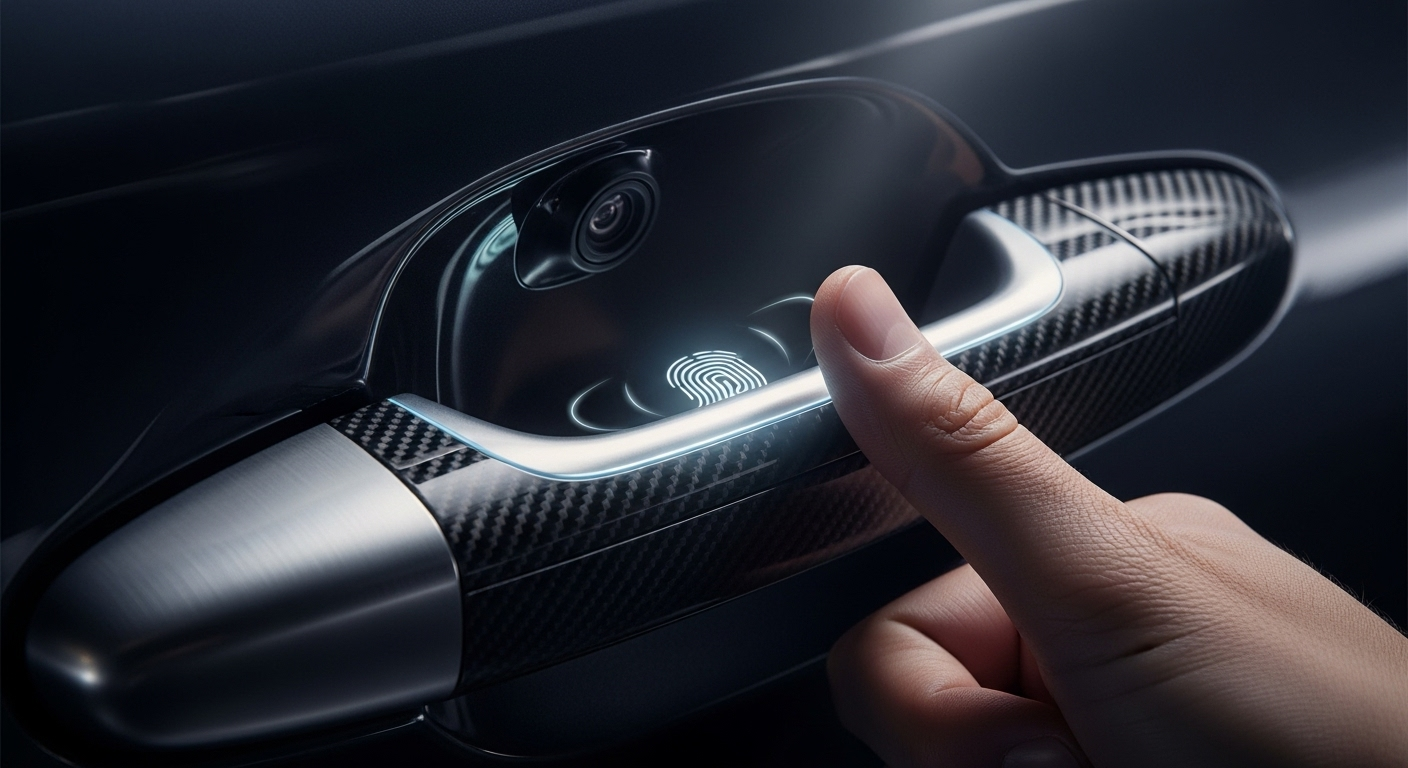Biometric Vehicle Access: Unlocking the Future of Car Security
The gentle hum of an approaching vehicle breaks the silence. As the driver nears, the car springs to life, doors unlocking and interior lights illuminating. No key fob in sight – just the unique biological signature of its owner. Welcome to the world of biometric vehicle access, where your body becomes the key to your car.

The Evolution of Car Keys
To appreciate the significance of biometric vehicle access, we must first look back at the history of car keys. The journey from mechanical keys to today’s smart fobs spans over a century of automotive innovation.
In the early days of automobiles, cars were started with a simple crank mechanism. As vehicles became more sophisticated, the need for security led to the introduction of mechanical keys in the 1920s. These remained the standard for decades, with incremental improvements in design and security features.
The 1990s saw the advent of electronic key fobs, which allowed for remote locking and unlocking. This technology evolved into keyless entry systems and push-button start features, paving the way for more advanced access methods.
Biometrics in Vehicles: More Than Just Fingerprints
When most people think of biometrics, fingerprint scanners come to mind. However, the application of biometrics in vehicles extends far beyond this single modality.
Facial recognition systems use high-resolution cameras and advanced algorithms to identify drivers. These systems can adjust seat positions, mirror angles, and climate settings based on the recognized user’s preferences.
Iris scanning technology, known for its high accuracy and difficulty to spoof, is being explored by some manufacturers as an alternative to facial recognition.
Voice recognition allows for hands-free operation of various vehicle functions and can be used as an additional layer of security in multi-factor authentication systems.
Even more intriguing is the development of heartbeat recognition technology. By analyzing the unique electrical signals produced by a person’s heart, vehicles can identify drivers with remarkable accuracy.
The Mechanics of Biometric Vehicle Access
Implementing biometric access in vehicles involves a complex interplay of sensors, processors, and software. The process typically begins with enrollment, where the user’s biometric data is captured and securely stored within the vehicle’s system.
When approaching the vehicle, sensors activate and begin scanning for recognized biometric signatures. Once a match is found, the system sends signals to unlock doors, adjust settings, and in some cases, start the engine.
Crucially, the biometric data is encrypted and stored locally within the vehicle, rather than in a central database. This approach enhances privacy and reduces the risk of large-scale data breaches.
Benefits Beyond Security
While enhanced security is a primary selling point of biometric vehicle access, the benefits extend far beyond theft prevention.
Personalization is a key advantage. Biometric systems can instantly recognize different drivers and adjust various vehicle settings accordingly. This includes seat and mirror positions, climate control preferences, and even favorite radio stations or navigation destinations.
For fleet managers and car-sharing services, biometric access offers improved accountability and streamlined operations. It eliminates the need for physical keys or access cards, reducing administrative overhead and the risk of lost or stolen keys.
In terms of convenience, biometric access means never having to fumble for keys or worry about forgetting them. Your body becomes your key, always with you and impossible to misplace.
Challenges and Concerns
Despite its promise, biometric vehicle access is not without challenges. Privacy concerns top the list, with some consumers wary of systems that collect and store their biological data.
Reliability is another issue. Environmental factors like extreme temperatures, dirt, or moisture can potentially interfere with biometric sensors. Manufacturers must ensure their systems work consistently across a wide range of conditions.
There’s also the question of what happens in emergency situations. If a driver is incapacitated, how can first responders gain access to the vehicle? Backup systems and override protocols are essential considerations.
The Road Ahead
As biometric technology continues to advance, we can expect to see more sophisticated and integrated systems in future vehicles. Multi-modal biometric authentication, combining two or more biometric identifiers, may become the norm, offering enhanced security and reliability.
The integration of artificial intelligence could lead to systems that not only recognize drivers but also detect their emotional state or level of alertness, potentially improving safety by identifying distracted or fatigued drivers.
Biometric vehicle access represents a significant step forward in automotive technology, offering a blend of security, convenience, and personalization that was once the realm of science fiction. As this technology matures and becomes more widespread, it has the potential to fundamentally change our relationship with our vehicles, making them more responsive to our individual needs and preferences.
While challenges remain, the trajectory is clear: the cars of tomorrow will know us in ways we’re only beginning to imagine. As we move forward, the key to our automotive future may well be the very essence of who we are.





